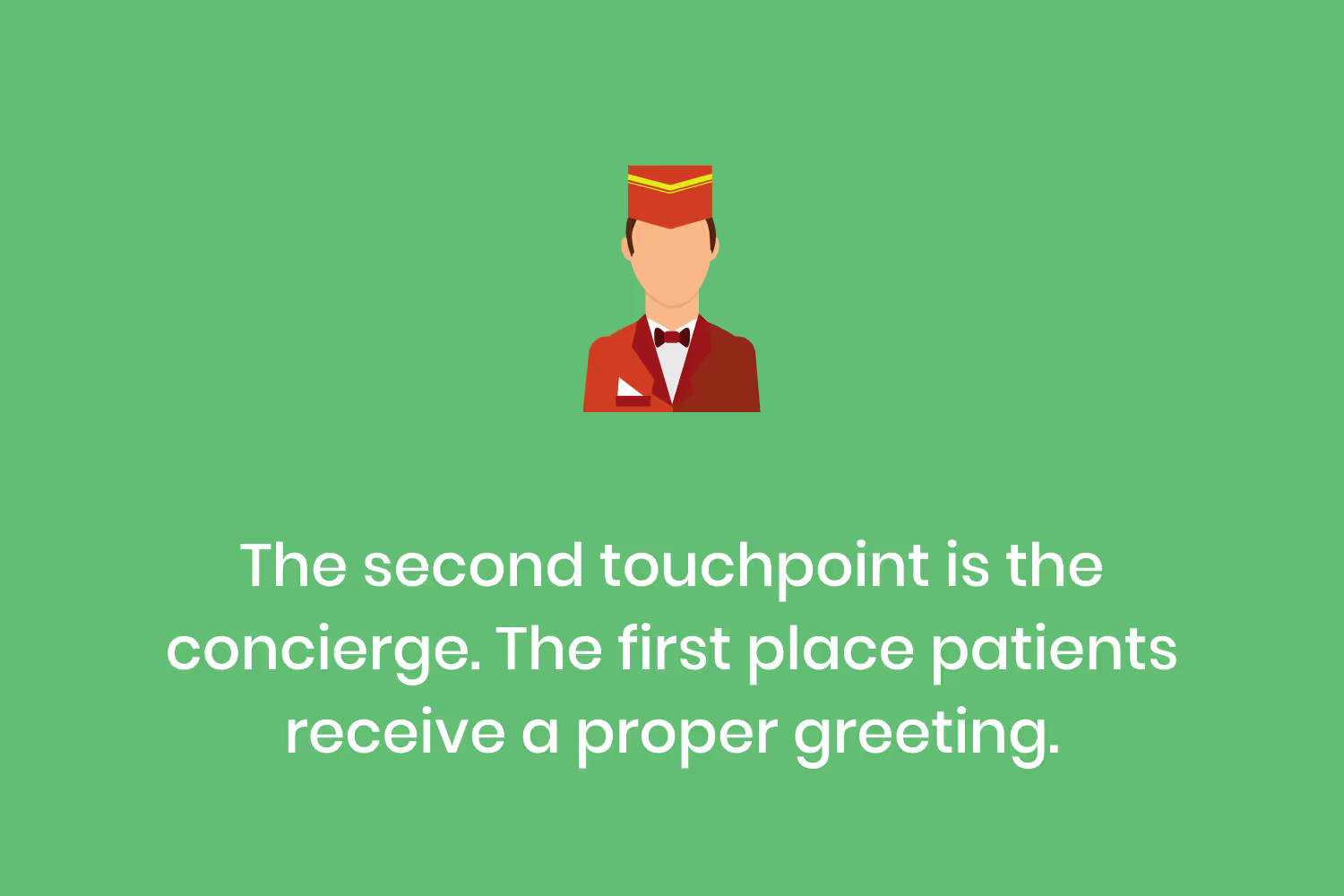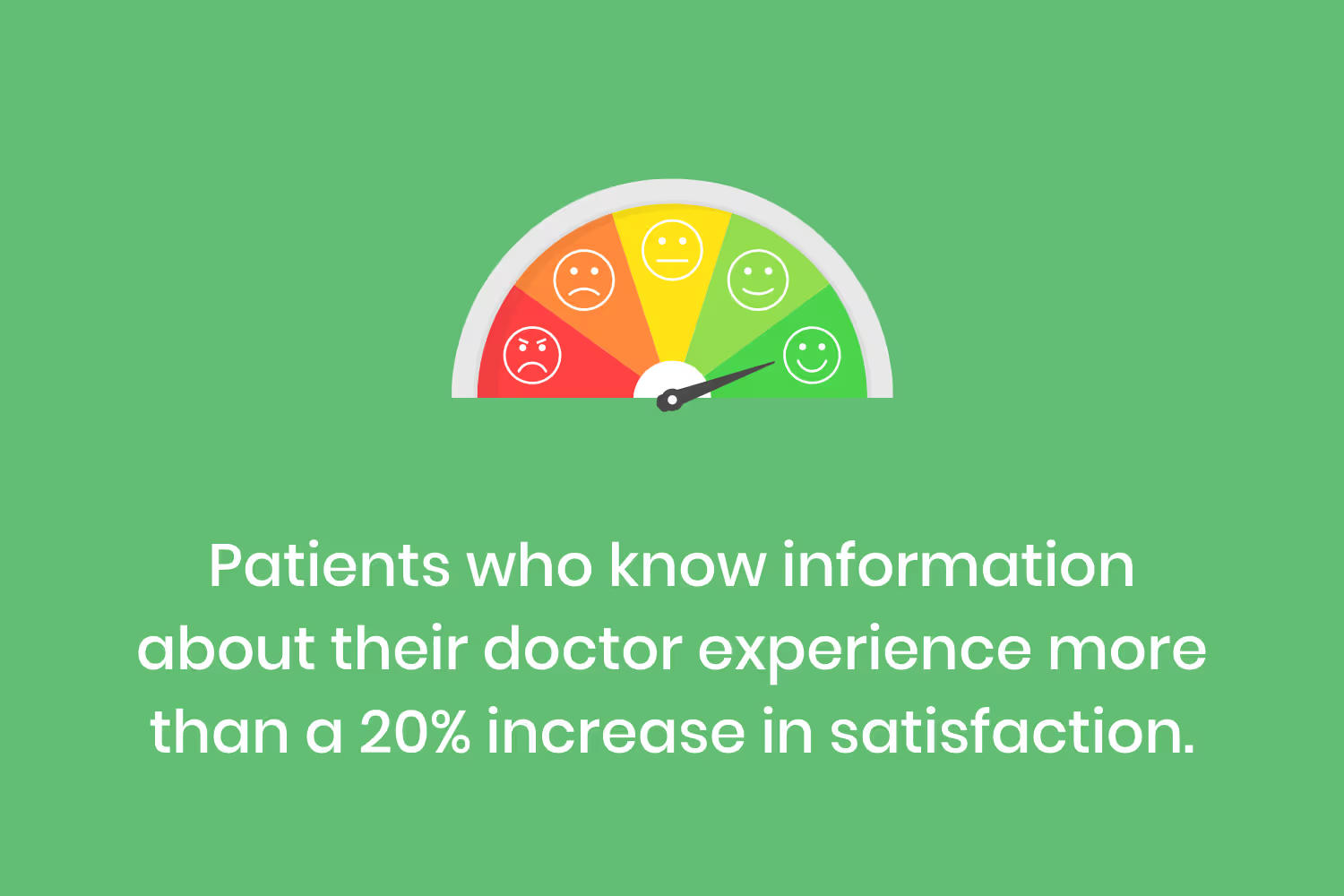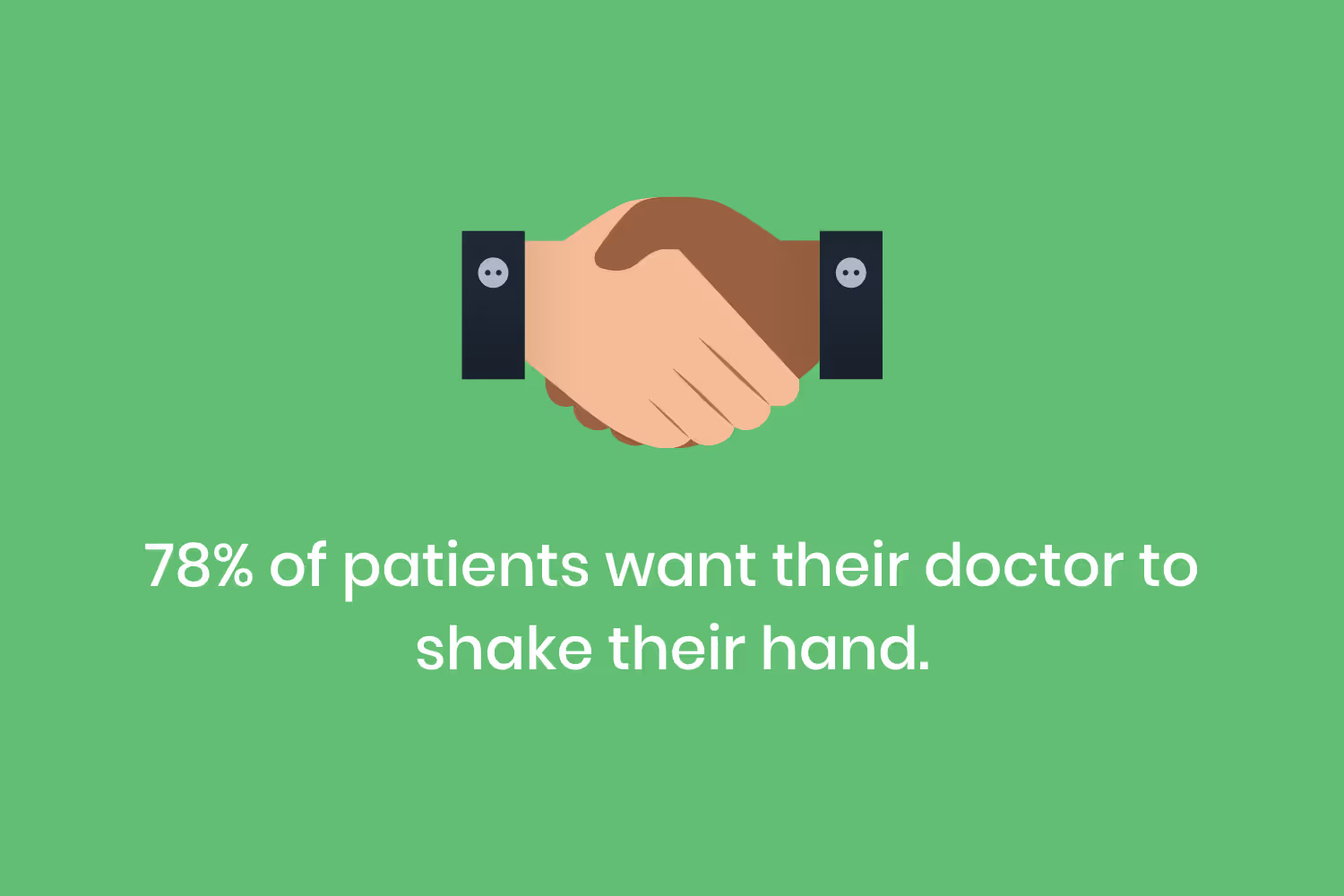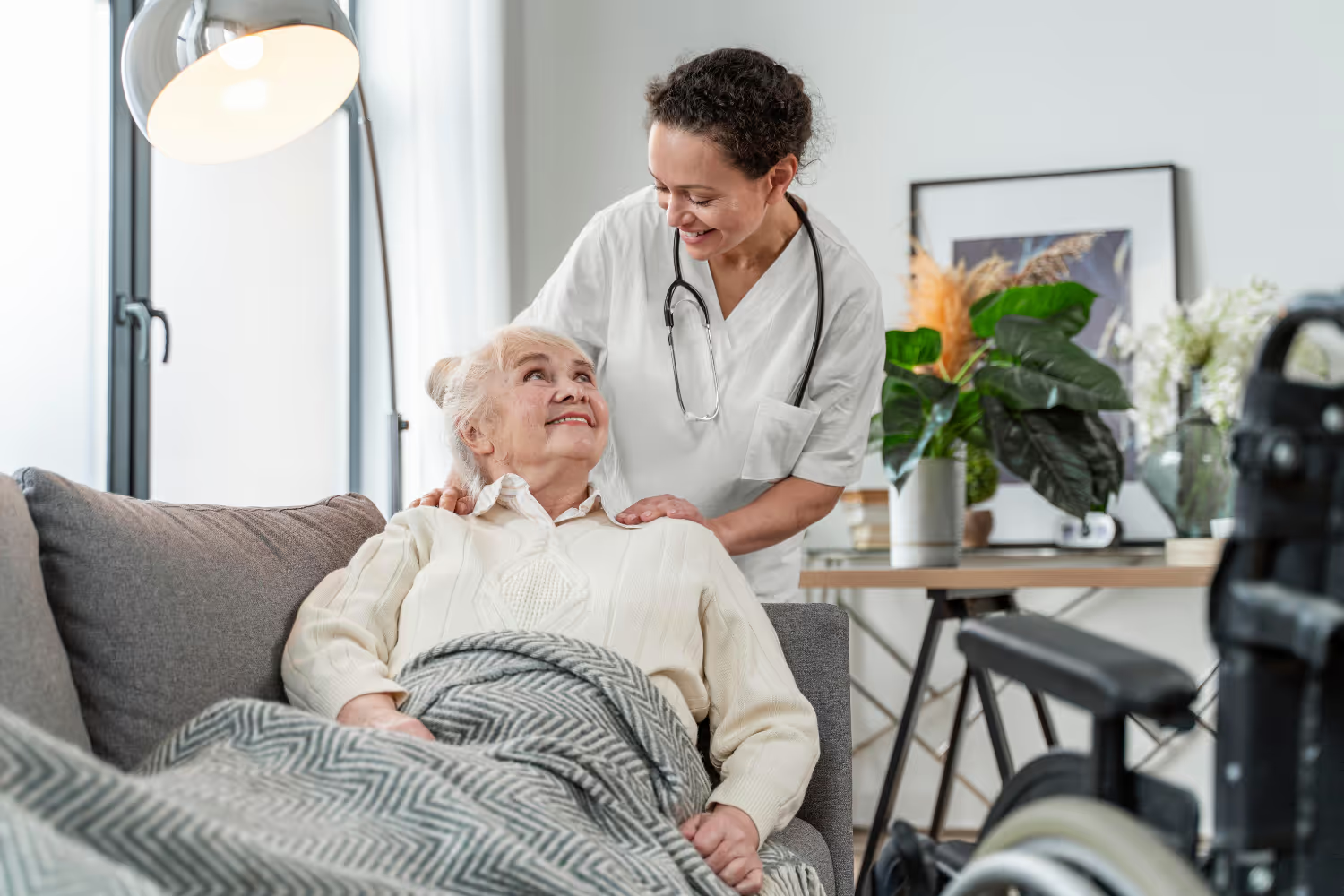Why Greeting Patients is So Important and How to Do it Right
If you’re trying to figure out where your patient experience is lacking, maybe it’s not a matter of how your waiting room looks or that you don’t post enough on social media accounts. Instead, your biggest area improvement could come from lacking in one of the smallest of gestures, greeting.

We purchase around 6.5 billion greeting cards every year for different occasions. This fact alone explains why every grocery store has an entire aisle devoted to buying these decorative pieces of paper.
If we take a look at this fact on a deeper level, though, why is this such a lucrative business?
We buy greeting cards because they’re more than just an envelope to house our gift cards or a formality, they make the person who receives it feel good. It’s a simple gesture that goes a long way.
But, let’s look at the concept of greeting from a higher level.
Tufts University social psychologist, Sam Sommers, wrote a self-reflection blog post entitled The Power of Hello. In it, he describes the positive impact of greeting his students before class. He didn’t realize how much his students appreciated it, though, until one of them left a written review expressing the impact it had on them.
Sommers went on to say, “There's surprising power to hello.”
My point after all of this is, if you’re trying to figure out where your patient experience is lacking, maybe it’s not a matter of how your waiting room looks or that you don’t post enough on social media accounts.
Instead, your biggest area improvement could come from lacking in one of the smallest of gestures.
So why is greeting your patients so important and how do you improve this area for your entire staff?
Finding The Right Entrance
Think about what you do when you come into work every morning. You park your car at your favorite or reserved parking spot, scan your ID card at the front door and start your morning routine.
That sounds like the start of a productive day. But there’s a big problem here, it’s only about yourself.
In other words, we never look back at what the patient goes through. The majority of us don’t think about where the client or parks and how they find the right entrance.

After all, if you work or operate a hospital there are about twenty signs trying to direct traffic to the right department.
From their perspective, they’re driving to an unfamiliar place while ill, trying to get help. So they’re already worried about their diagnosis now they have to figure out how to find the right entrance.
They’re also going to an intimidating healthcare facility with a mass parking lot that might make them walk a long distance.
My point after all of this is that greeting patients starts before they’ve even walked through your doors. If they had to spend 30 minutes trying to find a parking space semi-close to what they think is the right entrance for their ailment, they’re going to enter your building frustrated.

I’m not saying you should restructure your parking lot, that’s either not an option or way too expensive.
Instead, I’m asking that you keep what I just said in mind. If they enter your office frustrated for reasons outside of your control, a welcoming and personable greeting could have a huge impact on their mood.
Walking To Your Office
Let’s stick with the idea that you work at a hospital or a large healthcare facility. Once they’ve let themselves into your building, what happens next?
Their first touchpoint in your building will most likely be through security. Sure, security is there to ultimately protect your clients and I’m sure they feel safe walking into your office.
However, if you’ve ever met an on-duty security officer before you know that they’re a little gruff. That’s the nature of their job. In order to protect the masses, they have to be direct and impersonal.

If a patient comes into the hospital flustered from trying to find the right entrance, only to have to pass through an overly-stern security guard, their frustration will only build.
Once they’re past security it’s on to the concierge. If your hospital is like most, this is the first time your patients receive a friendly greeting. Hopefully, it’s a welcome “hello” followed up with helpful directions.
Sure, eventually patients receive a greeting. However, if everything leading up to that greeting was a disaster, it won’t garner a good response from them.
We often forget about the faces we see every morning as we stumble into work before our first cup of coffee, our minds are on autopilot. Thus, hospitals forget to keep them in mind when trying to boost their patient experience.

Another scenario that happens often with modern-day hospitals is that they outsource their security to an entirely different company.
The unfortunate result of outsourcing is the mentality that the hospital doesn’t have direct control over their business partner. Although that may be somewhat true, it’s a little overexaggerated.
Patients go to a hospital or healthcare facility to receive services they require, with that comes a certain standard of care. Patients pay for the care they receive and thus there’s a standard for service as well.
In other words, they don’t care about your network of companies that help your business run.
Thus, if your security provider’s staff isn’t greeting your patients you have the right to change your expectations. If someone comes in for their first-ever appointment with you and it’s unpleasant, they’ll never come back and might leave a bad review.
You have to set a welcoming standard for your entire healthcare facility, especially for the departments your patients see immediately.
Getting To Your Waiting Room
They’ve finally made it to your office. However, the greeting has only just begun.
Your front desk’s main job is to do things like…
- Check-in
- Check-out
- Check eligibility
- Make follow-up calls
- Help with insurance changes
Above everything else, though, their main responsibility is to establish rapport with your patients. Rapport can’t happen if they don’t give a proper greeting. But what does that look like?
Well, more than half of all patients want their doctor to call them by their first name. That fact might seem a little strange at first considering that a healthcare facility is technically a formal environment.

However, it makes sense if you think about it.
Going to the doctor is one of the most personal and private experiences that we all go through. Patients entrust doctors with their confidential health information in order to receive treatment.
Of course, healthcare professionals have no choice but to protect the data of their clients considering HIPAA (which sometimes they’re in violation of), but that’s a different story.
The point here is that healthcare clients prefer reference by their first name because it’s in such a personal setting.
In other words, they want to feel like they know the place they’re going to and, believe it or not, referring to them by their first name is a small adjustment that helps establish rapport faster.
Author and former medical professional, Atul Gawande, made note of the positive effects that came with referring to his clients by their first names in his book The Checklist Manifesto. Specifically, he noticed that using first names led to people speaking up more often and listening attentively. He called this the “activation phenomenon”.
The unfortunate problem, though, is that most healthcare offices don’t use first names in around half of their patients’ first visits. That’s a missed opportunity.

Seeing The Doctor
At this point, most healthcare organizations patient experiences included two greetings in total.
That’s enough, right?
No.
During the appointment itself is when greetings become most important.
If the patient went through all of the trouble I’ve described thus far to finally get to their ultimate objective 30 minutes to 45 minutes later, their expectations are high. Imagine finally getting to meet someone whom you have a lot of respect for only to not receive it back.
Doctor’s aren’t immune to greeting their patients. In fact, their introduction is more important than all of the different points of contact I’ve mentioned thus far.
A perfect greeting starts with introducing yourself. This seems like an obvious statement but the reality is that 57% of patients are unable to name a single member of the medical staff.

When you first “meet” your client, you already know their name well in advance of the day that they came into your office for an appointment. But it’s common courtesy to introduce yourself, even when you already know the name of the individual you’re finally meeting.
There are actual proven benefits to letting your clients know your name. Patients who know some personal information about their doctor experience more than a 20% increase in their satisfaction levels.

A proper introduction as a doctor also includes explaining your role, qualifications, experience, and track record. These smaller details actually improve the perception of closeness between you and your client.
Beyond talking about yourself as an accredited physician, there’s more that goes along with greeting your patients during their appointment.
Have you ever heard people say that smiling is contagious?
Well, there’s validity to that notion. A research paper published by psychologists at the Unversity of Wisconsin found that we all subconsciously mimic the facial expressions of others we’re talking to in order to empathize with and experience their feelings.
Simply put, smiling while greeting your patients will subconsciously make them happy to see you.
Furthermore, one of the most common ways to say hi to someone in the United States is through a handshake. That social norm carries over into the healthcare world as well considering 78% of patients want their doctor to shake their hand.

Of course, not every client you’ll see is a native of the United States and different parts of the world introduce themselves in different ways. Eastern cultures, for example, say hi to each other by bowing.
Additionally, shaking hands isn’t necessarily sanitary. To be more specific, a handshake transfers almost twice as many bacteria as a high five. So, maybe fist-bumping your patients is the more effective route, it’s a little quirky but it guarantees that you won’t spread illness.
Conclusion
Almost 70% of people make a first impression before the person they’re meeting has said anything.
Some argue that a first impression is everything.
However, that’s not the case.
A greeting and an introduction can change the initial impression of an individual if done correctly.
The bottom line is that modern healthcare is patient-centric and needs to cater to individual needs. But that can’t start if they aren’t properly greeted.
Sure, maybe you’ve spent thousands of dollars on different things within your organization to make the patient experience better. But none of that matters if the patient doesn’t feel welcomed before they’ve even set foot in your waiting room.
Every little detail matters in order to provide a stellar experience. Something as small as your staff saying “hello” as your clients navigate to their appointment has a lasting impression.
Emphasize your product's unique features or benefits to differentiate it from competitors
In nec dictum adipiscing pharetra enim etiam scelerisque dolor purus ipsum egestas cursus vulputate arcu egestas ut eu sed mollis consectetur mattis pharetra curabitur et maecenas in mattis fames consectetur ipsum quis risus mauris aliquam ornare nisl purus at ipsum nulla accumsan consectetur vestibulum suspendisse aliquam condimentum scelerisque lacinia pellentesque vestibulum condimentum turpis ligula pharetra dictum sapien facilisis sapien at sagittis et cursus congue.
- Pharetra curabitur et maecenas in mattis fames consectetur ipsum quis risus.
- Justo urna nisi auctor consequat consectetur dolor lectus blandit.
- Eget egestas volutpat lacinia vestibulum vitae mattis hendrerit.
- Ornare elit odio tellus orci bibendum dictum id sem congue enim amet diam.
Incorporate statistics or specific numbers to highlight the effectiveness or popularity of your offering
Convallis pellentesque ullamcorper sapien sed tristique fermentum proin amet quam tincidunt feugiat vitae neque quisque odio ut pellentesque ac mauris eget lectus. Pretium arcu turpis lacus sapien sit at eu sapien duis magna nunc nibh nam non ut nibh ultrices ultrices elementum egestas enim nisl sed cursus pellentesque sit dignissim enim euismod sit et convallis sed pelis viverra quam at nisl sit pharetra enim nisl nec vestibulum posuere in volutpat sed blandit neque risus.

Use time-sensitive language to encourage immediate action, such as "Limited Time Offer
Feugiat vitae neque quisque odio ut pellentesque ac mauris eget lectus. Pretium arcu turpis lacus sapien sit at eu sapien duis magna nunc nibh nam non ut nibh ultrices ultrices elementum egestas enim nisl sed cursus pellentesque sit dignissim enim euismod sit et convallis sed pelis viverra quam at nisl sit pharetra enim nisl nec vestibulum posuere in volutpat sed blandit neque risus.
- Pharetra curabitur et maecenas in mattis fames consectetur ipsum quis risus.
- Justo urna nisi auctor consequat consectetur dolor lectus blandit.
- Eget egestas volutpat lacinia vestibulum vitae mattis hendrerit.
- Ornare elit odio tellus orci bibendum dictum id sem congue enim amet diam.
Address customer pain points directly by showing how your product solves their problems
Feugiat vitae neque quisque odio ut pellentesque ac mauris eget lectus. Pretium arcu turpis lacus sapien sit at eu sapien duis magna nunc nibh nam non ut nibh ultrices ultrices elementum egestas enim nisl sed cursus pellentesque sit dignissim enim euismod sit et convallis sed pelis viverra quam at nisl sit pharetra enim nisl nec vestibulum posuere in volutpat sed blandit neque risus.
Vel etiam vel amet aenean eget in habitasse nunc duis tellus sem turpis risus aliquam ac volutpat tellus eu faucibus ullamcorper.
Tailor titles to your ideal customer segment using phrases like "Designed for Busy Professionals
Sed pretium id nibh id sit felis vitae volutpat volutpat adipiscing at sodales neque lectus mi phasellus commodo at elit suspendisse ornare faucibus lectus purus viverra in nec aliquet commodo et sed sed nisi tempor mi pellentesque arcu viverra pretium duis enim vulputate dignissim etiam ultrices vitae neque urna proin nibh diam turpis augue lacus.


.avif)

